So, you think you don’t have a carbon footprint because you drive everywhere! If you have any gullible friends, please don’t tell them that joke – they may actually believe that they’re doing the world a favour by using their car more. Jokes aside, you’ve probably used one of the following Google prompts to get you here:
- How to reduce my ecological footprint
- What is a carbon footprint
- Lower footprint
- Best blog ever (OK, that was the last joke, promise)
If you did Google one of these terms, you’re probably genuinely concerned about the environment and want to know how you can reduce your ecological footprint. Either that or you’re a Grade 10 student trying to find the pot of gold – a website with everything you need to finish that assignment that’s due tomorrow. Either way, you lucked out! In this article, I’ll provide top tips to help you reduce your ecological and carbon footprints.
You can significantly decrease your environmental impact by making sustainable choices in various aspects of your life. A lot of the time, it doesn’t take much more than making a conscious choice. Doing things like reducing single-use plastics, switching to renewable energy sources, and eating less meat can make a real difference! Read on to discover practical solutions that will help you live a more eco-friendly life.
Key Takeaways
- Reduce single-use plastics like bags, straws and water bottles
- Switch to renewable energy sources like solar power
- Eat less meat as the meat industry causes a large amount of greenhouse gasses
- Reduce personal waste by buying less. re-using whatever you can and looking at second-hand goods
Table of Contents
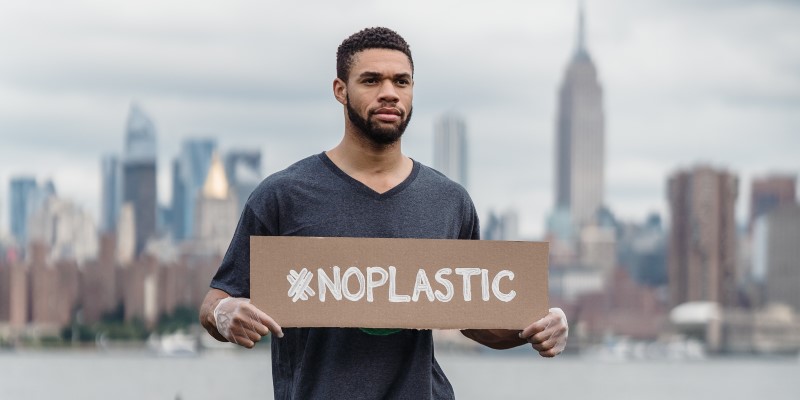
Understanding Your Ecological Footprint
So, if you want to get a handle on your ecological footprint, you need to start by thinking about how you go about your daily life and how it affects the environment. Making the decision to think about what you can do is, in itself, a big step. Once you’ve actually made the decision to be more conscious of how you go about life, you can start to take baby steps in making a change to your lifestyle. These small steps ensure you don’t freak out and return to old habits. And since there are so many ways to go about making a change, if something doesn’t suit you, try changing something else.
Don’t be discouraged that you’re only one person – seriously, what difference will one person make? The truth is, one person changing will do nothing. Lucky for us, you’re actually one of millions who actually does give a S#!T. And collectively, it makes a helluva difference!
So, what are some things that you can change? First things first.
What is a Carbon Footprint? A carbon footprint is the total amount of greenhouse gases (including carbon dioxide and methane) that are generated by our actions.
THE NATURE CONSERVANCY
20 Things That Are In Most People’s Carbon Footprint
- Transportation: Emissions from cars, trucks, and other vehicles.
- Home Energy: Heating, cooling, and electricity use in homes.
- Diet: Emissions associated with food production, particularly meat and dairy.
- Air Travel: Emissions from flying on airplanes.
- Appliance Usage: Energy use from household appliances like refrigerators, ovens, and washing machines.
- Single-Use Plastics: Production and disposal of plastic products.
- Waste Generation: Emissions from landfills and waste incineration.
- Shopping Habits: Emissions from the production and transportation of goods.
- Clothing: Manufacturing and disposal of clothing items.
- Water Usage: Emissions associated with water heating and treatment.
- Paper Consumption: Emissions from paper production and disposal.
- Electronics: Manufacturing and energy use of electronic devices.
- Leisure Activities: Emissions from recreational activities and entertainment.
- Fast Fashion: High emissions from the quick turnover of trendy clothing.
- Land Use: Deforestation and urbanization leading to emissions.
- Personal Care Products: Production and disposal of cosmetics and toiletries.
- Cruise Ships: High emissions from luxury cruise vacations.
- Gardening: Emissions from landscaping and yard maintenance.
- Home Renovations: Emissions from construction and remodelling projects.
- Packaging Waste: Emissions from excessive packaging of products.
If you’re looking through this list and thinking, ‘Damn, that’s a lot of stuff I’m doing wrong! Where do I even begin?‘ you’re not the only one. But thinking like that is just negative – let’s change things up and instead think, ‘OK, that gives me a lot of options on what I can change.’ Let’s now give ourselves options for changing that list and reducing our footprint.
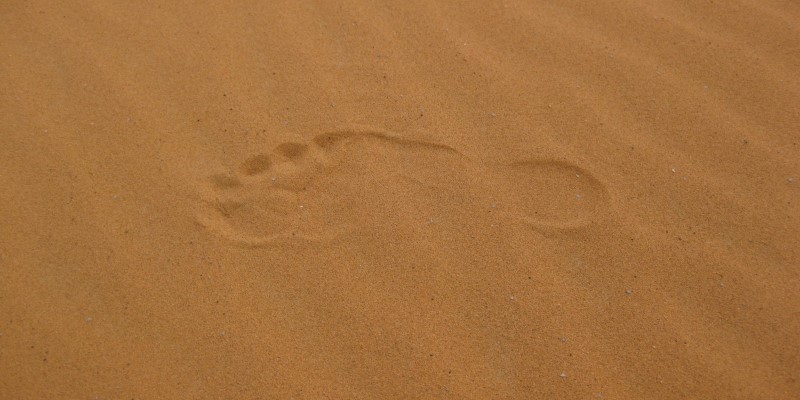
20 Things That I Can Change To Reduce My Carbon Footprint
- Transportation: Opt for public transportation, carpooling, biking, or walking when possible.
- Home Energy: Use energy-efficient appliances, seal drafts, consider solar power, and adjust thermostat settings.
- Diet: Eat more plant-based meals and reduce meat and dairy consumption.
- Air Travel: Choose non-stop flights and consider virtual meetings if possible.
- Appliance Usage: Unplug electronics when not in use and upgrade to energy-efficient models.
- Single-Use Plastics: Use reusable bags, bottles, and containers to reduce plastic waste.
- Waste Generation: Practice recycling and composting to divert waste from landfills.
- Shopping Habits: Buy local and secondhand products and prioritize sustainable brands.
- Clothing: Choose quality over quantity, and consider clothing swaps or rentals.
- Water Usage: Install water-saving fixtures and fix leaks promptly.
- Paper Consumption: Opt for digital documents when possible and recycle paper products.
- Electronics: Buy refurbished electronics and extend the life of existing devices.
- Leisure Activities: Explore low-carbon leisure options like hiking, biking, and picnics.
- Fast Fashion: Invest in timeless, durable clothing and support sustainable fashion brands.
- Land Use: Support reforestation efforts and advocate for responsible urban planning.
- Personal Care Products: Opt for eco-friendly and minimal packaging options.
- Cruise Ships: Choose alternative vacation options like eco-friendly resorts or local getaways.
- Gardening: Use native plants and sustainable landscaping practices to conserve resources.
- Home Renovations: Prioritize energy-efficient upgrades and materials.
- Packaging Waste: Buy in bulk and choose products with minimal packaging.
Now it’s simply a case of working through the list and deciding which things you can change in your life. If you’re a bit unsure, choose one or two to get you started – you can always come back for more. Think of it like the pack of Tim Tams that never runs out. (Metaphorically of course, cos Tim Tams might be on this list somewhere!)
The Impact of Consumer Choices
The choices that we make as consumers are significant. More often than not, we go for something more convenient than worrying whether it’s a sustainable product. If you want to reduce your footprint, you need to understand that the choices you make are far-reaching, and the hidden costs harm the planet the most.

The Hidden Impact of How We Live
- Fast Fashion: Budget stores like Target and Big W attract buyers with their super-cheap clothes, leading to overproduction of textiles, excessive waste, and pollution from dyeing and manufacturing processes.
- Single-Use Plastics: Using disposable plastic products like water bottles, straws, and utensils contributes to plastic pollution in oceans and landfills. This can harm marine life and ecosystems, while landfills produce methane contributing to air pollution.
- Gasoline-Powered Cars: If your car is a petrol-guzzler, it has poor fuel efficiency and increased carbon emissions. In other words, air pollution. Petrol is a fossil fuel that leads to air and water pollution, habitat destruction, oil spills, resource depletion …. I’ll stop there, but it’s a long list.
- Deforestation-Linked Products: Purchasing items like beef, soy products, or palm oil-based goods often contributes to deforestation, habitat loss, and biodiversity decline in regions where these resources are sourced.
- Convenience Foods with Excessive Packaging: Choosing pre-packaged, single-serving foods generates excessive plastic and packaging waste that ends up in landfills and contributes to pollution.
It makes sad reading, but that’s what you’re here for, and if you seriously want to make changes that help, then you need to be a little cynical about how you look at things. The positive side of all this is that none of this is hard to change. Let’s re-visit that list with some easy ways to change things up:
- Fast Fashion: Take a look at a local farmers market or your local opportunity shop – they all have a lot of fashion of all kinds and it’s all really cheap.
- Single-Use Plastics: Metal straws are easy to find, and you already have utensils in your kitchen. If you know you’re going out and will probably stop and eat somewhere, bring a small bag with a straw, knife and fork and say no to the plastic.
- Gasoline-Powered Cars: This one could be tough for some folks. If it’s a car you love, it’s hard to say goodbye. If it’s not affordable right now to change cars, I get it. It’s a big decision, but changing cars is one huge way to reduce your footprint. And if it really isn’t an option at the moment, dust off your bike or use those two things hanging from your waste a bit more. (Mind out of the gutter! I meant your legs!)
- Deforestation-Linked Products: Stop eating meat or reduce your meat intake. Easy. Palm oil is a big one – you’ll find it in margarine, snacks, cooking oils, baked goods, cosmetics, skin care products, detergents, shampoos, paints and plastics.
- Convenience Foods with Excessive Packaging: Leave the Lean Cuisine in the supermarket freezer and make your own food. Don’t have 15 minutes to make something yourself? Find the time – stop making excuses.
The old expression ‘Where there’s a will, there’s a way’ applies here. You want to make a change? You can! You just have to look at what you are doing and make some changes. You don’t have to change everything straight away.
No-one expects you to go overnight from:
A guy dressing in his $500 mass-produced suit, driving to work in his 20-year old Mustang that needs 50 litres of petrol per day to run, eating lunch in the local food hall and taking two sets of plastic cutlery ‘just in case’, going through 5 x 250ml bottles of Evian water and then coming home to whatever is in the freezer and can be zapped and ready to eat in 5 minutes…
to:
Changing out your wardrobe to 100% hemp clothing, trading in your Mustang for an old bike with flowers on the seat and a conveniently-placed basket on the front, spending all your lunch hour to find a store with organic produce so you can eat something that looks like rabbit food, drinking from the five litre water tank that you strapped to your back with a plastic tube running to your mouth like you’re running an ultra-marathon and then stopping at another organic produce store on the way home and filling that convenient bike-basket with enough produce to make the local organic farmer think he’s gotta switch back to conventional farming to keep up with demand from you alone…
As I mentioned previously, start with changing one or two things. Get used to it, then change a couple more. When you make conscious decisions and look for sustainable alternatives, you can really start to make a positive difference.
Environmental Consequences of Common Consumer Behaviours
Consider the environmental consequences of your common consumer behaviours. Every choice you make as a consumer has an impact on our planet. Understanding your actions’ environmental consequences can reduce your carbon footprint and contribute to a more sustainable future.
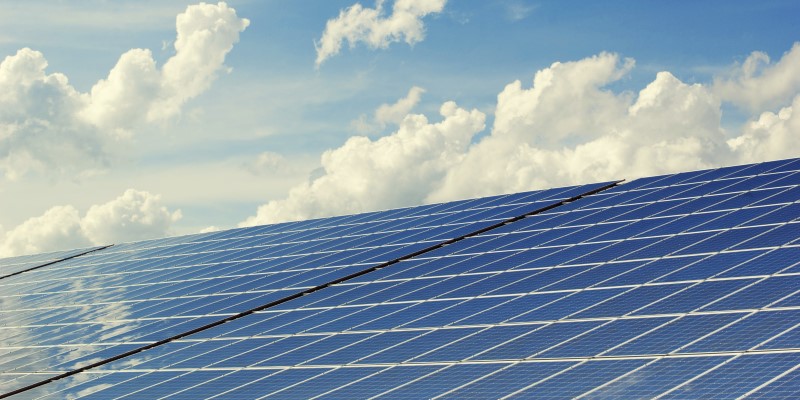
Additionally, recycling plays a crucial role in reducing waste and conserving resources. Try to recycle materials such as paper, plastic, and glass instead of sending them to landfills.
Were you aware that there has been a 20% increase in household waste in Australia since 2020?
SMARTCOMPANY.COM.AU
Reducing waste is essential. Buy products with minimal packaging and opt for reusable items instead of single-use products. These simple steps can significantly reduce your carbon footprint and help to protect the environment for future generations.
The Hidden Costs of Convenience
Switching to convenience-focused consumer behaviours may have hidden costs that harm the environment. While it may seem convenient to rely on handy plastic products or energy-intensive appliances, these choices contribute to increased greenhouse gases (GHGs) and depletion of natural resources. To reduce your carbon footprint, you really need to prioritize sustainable alternatives that minimize waste and promote resource conservation.
Consider the following table:
| Hidden Costs of Convenience | Sustainable Alternatives |
|---|---|
| Increased greenhouse gas emissions | Opt for items you can reuse instead of single-use products |
| Depletion of natural resources | Use energy-efficient appliances and light bulbs |
| Pollution from plastic waste | Choose products with minimal packaging |
| Energy consumption | Insulate your home and utilize renewable energy sources |
| Waste generation | Reduce food waste by planning meals and composting |
By making conscious choices daily, we can mitigate the negative impacts of convenience-focused behaviours. It’s important to remember that small changes can significantly reduce our ecological footprint and create a more sustainable future.
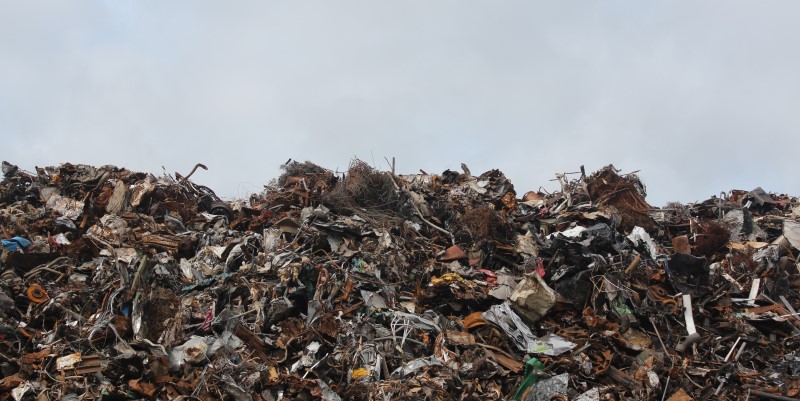
Overconsumption in Resource Depletion and Pollution
Overconsumption leads to the depletion of natural resources and increased pollution. To reduce your carbon footprint and combat these issues, here are some key actions you can take:
- Buy Less: Resist the urge to buy new things constantly. Instead, focus on purchasing durable items that have a longer lifespan.
- Consume Mindfully: Before making a purchase, ask yourself if you really need it or if there is an alternative option. Consider borrowing or renting items instead of buying them.
- Choose Sustainable Products: Opt for products that are produced using renewable resources and have minimal impact on the environment.
Reducing overconsumption can decrease GHGs associated with production and transportation while preserving our precious natural resources. Making conscious choices about our consumption will help us move towards a more sustainable future with reduced pollution.
Practical Tips for Reducing Ecological Footprint
Practical tips are what you’re after, right? There’s not much use in me recommending that you trade in your car for a horse and buggy. So, here we’ll look at what real-world changes we can make in our choice of foods, how we can reduce our personal waste and recycle what we do use as well as how we can make better use of energy and transportation.
Sustainable Food Choices
Here are 5 tips on making more sustainable food choices:
- Eat More Plant-Based Proteins: Go for plant-based protein sources like legumes (beans, lentils, chickpeas), nuts, seeds, and tofu. These require less land and water to grow compared to animal-based proteins.
- Source Locally Grown Foods: Choose foods that are produced locally and in-season. This reduces the energy and resources needed for transportation and storage, and it supports local farmers.
- Locate an Organic Produce Store: Just Google ‘Organic near me’ and, unless you live in the middle of nowhere, you’ll find some options. Organic farming practices often prioritize soil health, reduce synthetic pesticides and fertilizers, and promote biodiversity.
- Sustainably Sourced Seafood: Look for seafood products certified by organizations like the Marine Stewardship Council (MSC) or the Aquaculture Stewardship Council (ASC). These certifications ensure that the seafood is sourced from well-managed fisheries or responsible aquaculture practices.
- Reduced Food Waste: Minimize food waste by planning meals, storing food properly, and repurposing leftovers. Food waste contributes to unnecessary resource consumption and greenhouse gas emissions in landfills. It’s easy to start your own compost at home!
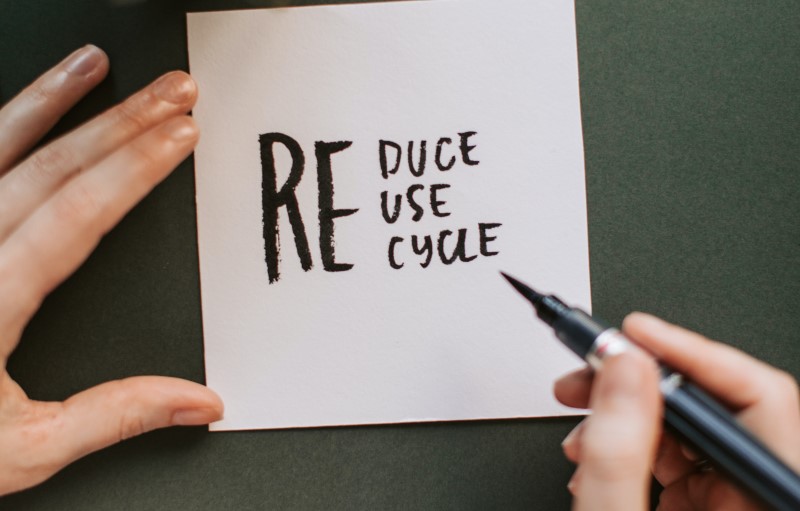
Waste Reduction and Recycling
Making use of the 3 R’s principle is a great way to reduce your waste.
What are the 3 Rs of Recycling?
- Reduce: You can reduce your waste by being more mindful of your consumption. For example:
- What do I consume? I drink 5 small bottles of water a day – that’s 5 plastic bottles that need to be recycled.
- How can I reduce this? Buy a sold refillable water container. This will be great to keep my water cooler on warm days.
- Reuse: Reuse items where possible rather than throw them out. Here are a couple of examples:
- Glass Jars and Containers: Instead of throwing away glass jars and plastic containers from food products, clean and reuse them for storing leftovers, bulk items, or homemade sauces. Glass jars can also be used as drinking glasses or for organizing small items like buttons, paper clips, or craft supplies.
- Old Clothing: Repurpose old clothing items that you no longer wear. You can turn t-shirts into cleaning rags, use fabric scraps for crafting or quilting projects, or transform jeans into stylish shorts. Old clothes can also be donated or swapped with friends to give them a second life.
- Newspapers and Magazines: Instead of discarding newspapers and magazines, consider using them for various purposes. Use newspapers as weed barriers in your garden, for wrapping delicate items when moving, or as material for paper mache projects. The kids will love magazines that can be used for collage art or cutouts for crafts. If you don’t have kids, you’ve probably got friends with kids. Or you can make some yourself!
- Recycle: recycle materials like paper, glass, and plastic according to local guidelines.
What Are Some Other Ways To Reduce Waste?
- Use Reusable Items: Replace single-use items with reusable alternatives. Carry a reusable water bottle, coffee cup, shopping bags, and utensils to avoid disposable items. This cuts down on plastic waste and conserves resources.
- Compost Organic Waste: Set up a composting system for food scraps and yard waste. Composting reduces the amount of organic waste that ends up in landfills, and the resulting compost can enrich soil for gardening.
- Mindful Meal Planning: Plan your meals to reduce food waste. Make a shopping list based on what you’ll actually use, and try to use leftovers creatively. Storing food properly and freezing excess items can also prevent spoilage.
- Choose Minimal Packaging: Opt for products with minimal or eco-friendly packaging. Buy in bulk when possible to reduce packaging waste, and choose products with recyclable or compostable packaging materials.
Waste reduction and recycling play a crucial role in reducing your carbon footprint and minimizing the impact on the environment. By reducing waste and properly recycling materials, we can significantly decrease the amount of carbon dioxide emitted into the atmosphere.
Energy and Transportation
Use public transportation or carpool with others to reduce your emissions and save energy. Public transport options such as buses and trains are more energy-efficient, as they can carry many people simultaneously. You might even be able to organise a carpool with colleagues allowing multiple individuals to share a single vehicle, reducing the number of cars on the road and decreasing emissions. Plus, it’ll make the trip feel faster with someone to talk to, meaning you get to work with a smile on your face! Now you have to hope that the workmate you get on best with is also the one you can carpool with!

At home, you can reduce your carbon footprint by switching to solar energy. If solar panels are not an option, there are always other ways to reduce energy usage. Invest in energy-efficient appliances that consume less electricity. Most white goods show their star rating when you buy them brand-new. Often, they come with a heftier price tag, but you save energy in the long run. More efficient appliances lower your energy consumption and contribute to a cleaner environment. Even just taking phones and computers off charge can make a difference.
You can also take shorter showers or install low-flow shower heads within the home. These are both easy ways to reduce water usage, and your hot water unit doesn’t have to work as hard to keep up with demand. Speaking of your hot water unit, you can also adjust the thermostat depending on the season. In winter, it can be set higher so you have hot water, but in summer, when your showers don’t need to be hot, you can set it lower. Another simple way to save water is not to run the tap while brushing your teeth. As you can see, simple things can make a big difference.
By making conscious choices to drive less and utilising alternative transportation options like public transit or carpooling, along with adopting renewable energy solutions for your home, you can significantly reduce your carbon footprint and promote a more sustainable future.
Conscious Consumerism
Consider supporting local and sustainable brands to impact the environment and promote conscious consumerism positively. Choosing products from these brands can reduce your ecological footprint and contribute to the fight against climate change. Here are three reasons why supporting local and sustainable brands is beneficial:
- Reducing Carbon Emissions: Local brands often have shorter supply chains, which means less transportation and lower carbon emissions. Additionally, sustainable brands prioritize environmentally friendly practices, such as using renewable energy sources and reducing waste in their production processes.
- Carbon Offset: Some sustainable brands invest in carbon offset programs to neutralize the carbon emissions associated with their products. By researching and purchasing from these brands, you indirectly contribute to these initiatives and help offset your carbon footprint.
- Sustainable Materials: Local and sustainable brands use eco-friendly materials with a lower environmental impact. They may utilize recycled or upcycled materials, organic fabrics, or biodegradable packaging, helping to conserve resources and reduce waste.
Supporting local and sustainable brands is a simple yet effective way to align your purchasing power with your values. By making conscious choices as a consumer, you can actively reduce your ecological footprint and promote a more sustainable future.
Embracing a Low-Waste Lifestyle
To embrace a low-waste lifestyle, you can start by making small changes in your daily habits. One effective way to reduce your ecological footprint is by minimizing GHGs. This can be achieved by incorporating simple practices such as reducing food waste and opting for vegetarian or meatless meals.
Did you know? The Australian beef and sheep industries currently contribute around 10% of Australia’s total greenhouse gas (GHG) emissions and over two thirds of this comes from cattle.
SUSTINABLE AUSTRALIAN BEEF
Plastics continue to be a significant issue. Despite reducing our use of plastic bags in favour of reusable options, our landfills are still filled with plastic waste.
Here are 5 ways that you can reduce your plastic use:
- Reusable Bags: Whenever you’re out shopping, bring your own reusable bags. This way, you won’t need those single-use plastic bags that end up in landfills.
- Say No to Straws: Skip the plastic straws when grabbing a drink. If you need a straw, consider getting a reusable one made of metal, bamboo, or glass.
- Reusable Water Bottles: Instead of buying bottled water, invest in a good-quality reusable water bottle. You can fill it with tap water or filtered water, which helps to reduce the demand for plastic bottles.
- Bulk Shopping: Whenever possible, opt for products that come in bulk or larger sizes. This reduces the amount of plastic packaging used for individual items.
- Choose Alternatives: Look for alternatives to single-use plastics. For instance, switch to glass or stainless steel containers for storing food, and use cloth napkins instead of disposable paper ones.

Reducing food waste is crucial because it saves resources used in production and reduces methane emissions from landfills. Choosing plant-based meals or having meatless days can further reduce the environmental impact associated with the meat industry. These small yet impactful choices will significantly contribute to lowering your carbon footprint and promoting a sustainable future.
Engaging Others and Advocacy
Engaging others and advocating for sustainable practices is crucial in positively impacting the environment. We can collectively work towards a more sustainable future by spreading awareness and encouraging people to reduce their carbon footprint. Here are some top tips for engaging others and promoting advocacy:
- Lead by example: Show others how easy it is to reduce their ecological footprint by making sustainable choices in your own life. This is especially important if you have children – teaching them important principles at an early age will instil the same ethics system.
- Share knowledge: Educate others about the importance of reducing carbon emissions and provide them with practical tips on how to do so. Don’t get on the PA system at work and bang on for 20 minutes about the environment – this will only drive people in the opposite direction. If someone asks why you have such a big water bottle, tell them, but make it brief. They’ll be more inclined to ask you more questions if they know that you’re not going to lecture them!
- Use social media: Utilize platforms like Facebook, Instagram, and Twitter to share informative content, success stories, and actionable steps that individuals can take. You can share your story and its effect on your life – you will be surprised at how many people you can inspire to do the same!
- Organize community events: Host workshops, seminars, or clean-up drives to unite people and create a collective responsibility towards the environment. If you live near a park, organise an hour of clean-up. It’s a great way to meet and connect with people.
- Collaborate with local organizations: Partner with environmental groups or businesses with similar goals to amplify your message and reach a wider audience.
Remember, every small action counts in reducing our ecological footprint. We can inspire others to join us in positively impacting our planet’s health through engagement and advocacy.
In Finishing, That’s ALL That I Need To Do?
Yep, if you can do EVERYTHING here, you’re a superstar! But you know what? You don’t have to do it all – do what you can. Teach your little ones the benefits of living sustainably. Spread your knowledge if it’s welcome, but accept that not everyone is receptive to advice or wanting to change.
It’s awesome that you’re looking at what you can do to help the environment. I appreciate you reading (or skimming!) through this article. Feel free to connect with us to share your story. We’d love to hear from you!
About the Author

ALEX
Alex is an adventurous guy in his early 30s who embodies a touch of the hippie. Passionate about social and environmental causes, he’s managed to travel the world, from immersing himself in Japanese culture for a year to embarking on a six-month backpacking escapade through Peru. Alex loves to learn and has taken numerous courses in Environmental Science and Conservation.
Alex’s commitment to recycling fuels his mission to repurpose discarded items. As a result, he favours garage sale treasures over department stores. He prefers walking and biking to driving. Alex spreads awareness about organic living through Just Organics, joined by his like-minded friend Charlie.
